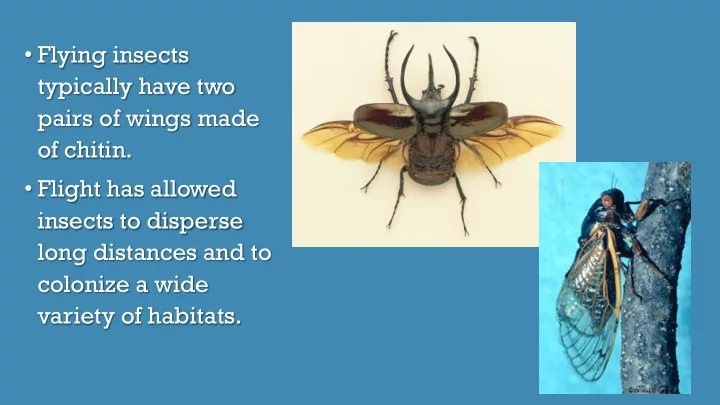

• Flying insects typically have two pairs of wings made of chitin. • Flight has allowed insects to disperse long distances and to colonize a wide variety of habitats.
METAMORPHOSIS • The growth and development of insects usually involves metamorphosis, which is a process of changing shape and form. • Insects undergo either incomplete metamorphosis or complete metamorphosis.
• Immature insects that undergo incomplete metamorphosis look very much like the adults. • These immature forms are called nymphs.
• In complete metamorphosis, animals hatch into larvae that look and act nothing like their parents. • They feed and grow rapidly and molt a few times. • They undergo a final molt and change into a pupa — the stage in which an insect changes from larva to adult.
COMMUNICATION • Insects communicate using sound, visual, chemical, and other types of signals. • Much of their communication involves finding a mate.
INSECT SOCIETIES • Ants, bees, termites, and some of their relatives form complex associations called societies. • A society is a group of closely related animals of the same species that work together for the benefit of the whole group
COMMUNICATION IN SOCIETIES • Each species of social insect use visual, touch, sound, and chemical signals to communicate information among members of the colony. • Honeybees communicate information about food through a series of complex movements.
Recommend
More recommend